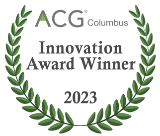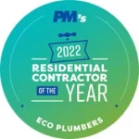Introduction
Your home’s plumbing systems play a crucial role in the daily functioning of your home. From washing dishes and preparing meals to taking showers and handling personal hygiene, these plumbing fixtures are crucial to your comfort and convenience. However, like all systems in your home, they require regular maintenance to ensure they operate efficiently and effectively. Neglecting plumbing maintenance can lead to common issues such as leaks, clogs, and even costly water damage. In this article, we will explore how to properly maintain your kitchen and bathroom plumbing to extend the life of your fixtures and prevent expensive repairs.
1. Regularly Inspect for Leaks:
The first step in maintaining your plumbing system is to regularly inspect your pipes and fixtures for any signs of leaks. Leaking pipes can cause extensive water damage, mold growth, and higher water bills if left unchecked. In the kitchen, check under sinks, around dishwashers, and around faucets for any signs of dampness or water stains. In the bathroom, inspect under the sink, around the toilet, and in the shower for any signs of leaks. If you notice any signs of water escaping, it is crucial to address the issue immediately to prevent further damage. Early detection and repair of leaks can save you money and prevent larger problems in the future.
2. Clean Drains and Prevent Clogs:
Clogs are among the most common plumbing issues in both kitchens and bathrooms. Over time, food particles, grease, soap scum, hair, and other debris can accumulate in your drains and pipes, leading to slow drainage or blockages. To prevent clogs, avoid discarding large food particles down the kitchen sink, and always use drain covers to catch hair in the bathroom. A regular cleaning routine can also help; you can use a mixture of baking soda and vinegar to clean your drains, which helps break down buildup and keep things flowing smoothly. If you experience a persistent clog, using a plunger or calling a professional plumber can help clear the blockage and prevent further damage.
3. Check Water Pressure Regularly:
Low water pressure can be a sign of a plumbing issue, such as a clogged pipe, a leak, or mineral buildup in the fixtures. If you notice a drop in water pressure in the kitchen or bathroom, take a moment to inspect the faucets and showerheads for mineral deposits or obstructions. You can clean aerators and showerheads with vinegar to dissolve mineral buildup. If the water pressure is still low after cleaning, you may need to inspect your pipes for leaks or clogs. Regularly monitoring water pressure helps ensure a steady flow of water and can prevent more significant plumbing issues from developing over time.
4. Maintain Your Garbage Disposal (Kitchen):
In the kitchen, the garbage disposal is a hardworking appliance that requires regular maintenance to function properly. To prevent clogs and damage, avoid putting fibrous or hard materials, such as bones, coffee grounds, and potato peels, down the disposal. Regularly running cold water while operating the disposal helps flush waste through the system and prevents it from clogging. You should also clean the disposal periodically by grinding up ice cubes and citrus peels, which help remove buildup and odors. If your garbage disposal starts making unusual noises or has trouble operating, it may need to be repaired or replaced. Therefore, it’s essential to monitor its condition to prevent costly repairs down the line.
5. Inspect and Clean the Toilet (Bathroom):
Toilets are among the most frequently used fixtures in the bathroom, and regular maintenance is essential for preventing issues such as clogging or running water. Start by checking the toilet for leaks around the base, as this can indicate a worn-out wax ring or other plumbing issues. The flush mechanism should also be inspected regularly for signs of wear, and the flapper valve should be replaced if it starts to deteriorate. To prevent clogs, be mindful of what you flush—avoid flushing non-dissolvable items such as paper towels, wipes, and feminine products. Additionally, you can periodically clean the toilet with a toilet brush and disinfectant to remove stains and maintain the bowl’s hygiene.
6. Check for Hard Water and Mineral Buildup:
Hard water, which is rich in minerals such as calcium and magnesium, can cause a range of issues in your plumbing system. Over time, mineral deposits can accumulate in your pipes, faucets, and fixtures, resulting in reduced water flow, damaged pipes, and unsightly stains on your sinks, tubs, and showerheads. To prevent these issues, consider installing a water softener, especially if you live in an area with hard water. Regularly clean faucets and showerheads with vinegar to dissolve mineral buildup. If you notice a decrease in water flow or visible deposits, it’s time to address the mineral buildup to prevent further damage to your plumbing system.
7. Seal Around Fixtures and Pipes:
Sealing around plumbing fixtures in both the kitchen and bathroom is an essential maintenance step that many homeowners overlook. Over time, the caulk and seals around sinks, tubs, and showers can deteriorate, allowing water to seep into walls or floors, which can cause rot and mold growth. To prevent water damage, inspect the seals around your kitchen and bathroom fixtures and reapply caulk as needed. Pay special attention to areas where water can leak, such as around the base of the toilet, the sink, and the edges of your bathtub or shower. Proper sealing not only prevents leaks but also helps maintain the structural integrity of your plumbing system.
8. Schedule Professional Inspections:
While routine maintenance is essential, it’s also important to schedule periodic professional inspections of your plumbing system. A licensed plumber can inspect your pipes, faucets, water heater, and other plumbing components to detect issues that may not be visible to the naked eye. These inspections can help catch problems early, such as hidden leaks, water pressure issues, or the need for pipe replacements. It is recommended to schedule a plumbing inspection at least once a year or every other year to ensure your plumbing systems are in good condition. Early intervention can save you money on repairs and prevent future disruptions.
Maintaining your kitchen and bathroom plumbing is crucial for ensuring the longevity of your plumbing system, preventing costly repairs, and maintaining a comfortable home environment. Regularly inspecting for leaks, cleaning drains, checking water pressure, and caring for fixtures like your garbage disposal and toilet can help prevent major issues down the road. Additionally, monitoring hard water buildup, sealing around fixtures, and scheduling regular professional inspections will help keep your plumbing in top shape. By investing time in routine maintenance, you can avoid common plumbing problems and enjoy a well-functioning system for years to come.
Conclusion
Are you ready to extend the life of your plumbing system? Contact us at Eco Plumbers, Electricians, and HVAC Technicians at (855) 326-7586 to schedule a professional inspection and ensure your kitchen and bathroom plumbing is in optimal condition!









